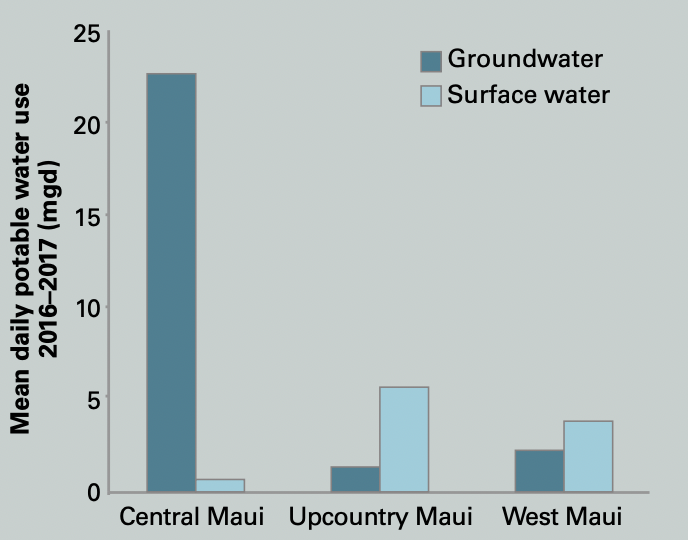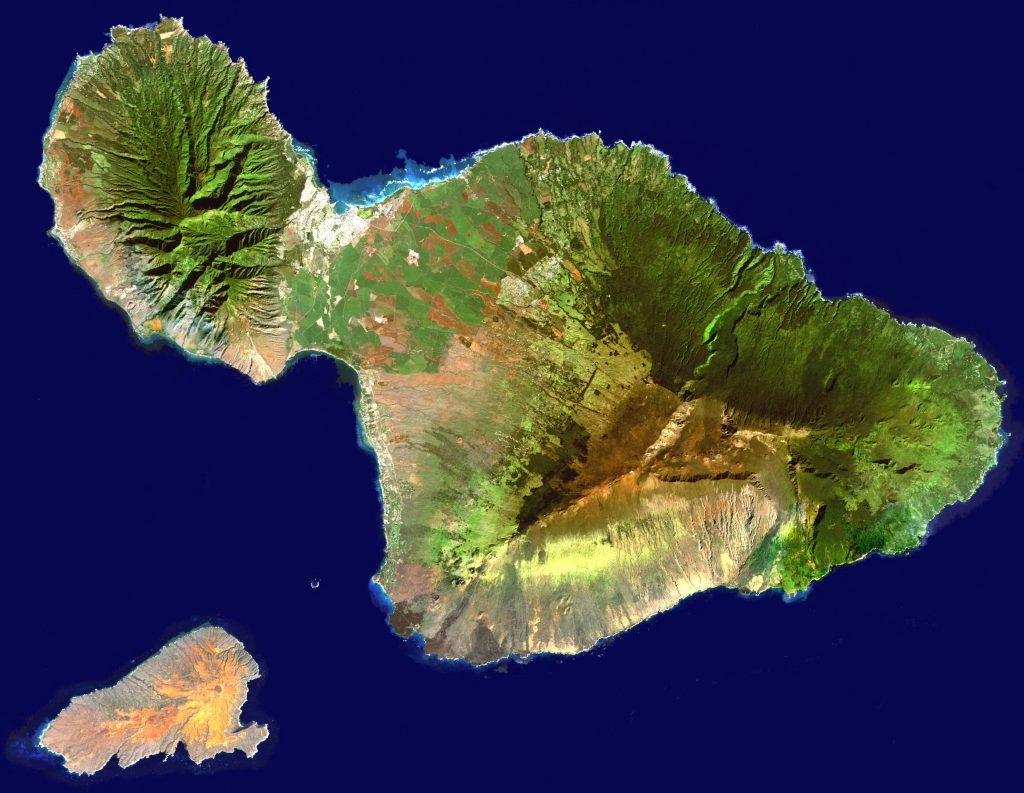Reduced rainfall from meteorological drought can have direct effects on social-ecological systems; the most obvious consequence is reduced runoff and streamflow. Streams provide important ecological services on tropical islands, including water for hydropower production, habitat for freshwater fauna, irrigation of agriculture, and potable water supply. On Maui Island, surface water is a critical source of potable water supply, supplying 26.7 percent of total water for the island. Some regions are more dependent on surface water supply than others. For example, surface water sources supply most of the water systems in upcountry Maui (84.6 percent) and west Maui (65.1 percent) (fg. 5.3). These streams are vulnerable to drought, leading to frequent declarations of stage 1 water shortages (voluntary reductions in water use), where anticipated water demand is projected to exceed available water supply by 1–15 percent. Reservoirs in these regions help buffer the water system against shifts in surface water availability. However, if drought conditions continue and water conservation measures do not limit short term use, stage 2 or stage 3 water shortages may be declared, requiring mandatory reductions in water use.
To learn more, read the report by Frazier et al.

Maui County Department of Water Supply mean daily groundwater versus surface potable water use for central drought-pest interactions have led to tree mortality of Maui, upcountry Maui, and west Maui regions, 2016–2017

